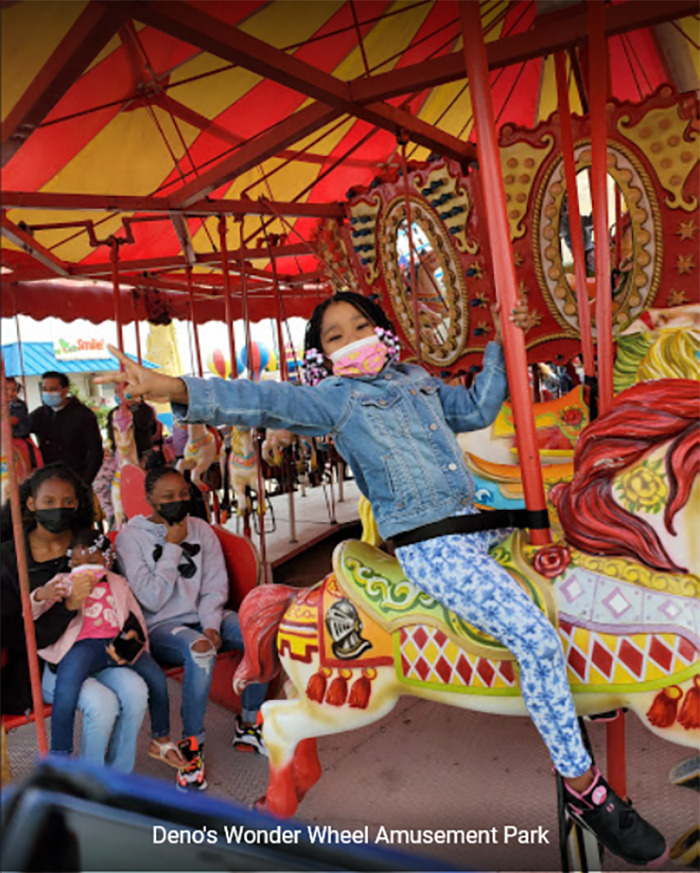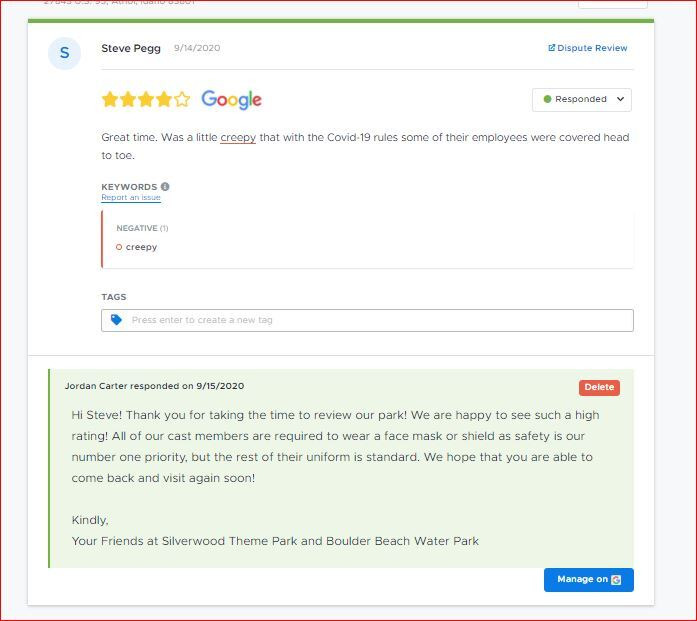Social Media Strategies in the Era of COVID-19

After more than a year of coping with the pandemic, people are reengaging with one another and trying to make sense of the “new normal,” including mask wearing and social distancing, when guidelines vary across countries, states, and even attractions.
With many visitors excited to get back together, some operators may find guests are not shy about sharing their beliefs on social media. As attractions welcome visitors back in larger numbers, how should they respond to online comments guests make, both negative and positive, about facilities?
After being closed for 18 months, Deno’s Wonder Wheel Amusement Park in Brooklyn, New York, United States, reopened in April. Tricia Vita, the park’s social media manager, suspects that online posts to date are largely positive because people are just happy to return after such a long absence. She’s seen virtually no complaints about the need to make advance reservations (even though the Coney Island park has long been ungated), mask requirements, or any of the other new guidelines.
“Because New York was an early epicenter of the pandemic, people are generally respectful of each other, and mask compliance is very high,” notes Vita.
Inevitably, there will be negative comments, and she says that she plans to respond by restating the park’s safety initiatives that are listed on its website. For now, Vita is reposting some visitors’ positive comments and photos on Twitter and on the park’s Facebook page. These include a post from an appreciative parent who received complimentary ride passes to accompany her autistic child and a delightful photo of a child enjoying a spin aboard the park’s carousel.

While visitors are mostly in sync with pandemic guidelines at Deno’s, compliance is varied at Silverwood Theme Park in Athol, Idaho, United States. That’s because regional governments’ regulations vary upon location. The state of Idaho has not imposed a mask mandate, instead leaving it up to counties. However, the neighboring states of Washington and Oregon—which are key markets for the park—do have mask requirements. These differences can create different expectations and tension among guests, depending on where they are based.
Last summer, the county in which Silverwood is located introduced a mask mandate (which is no longer in effect) but specified that the rule only applied in situations where people could not socially distant.
“We have enough space, especially since we limit capacity, to allow for social distancing,” says Jordan Carter, director of marketing at Silverwood. “We decided we would not become the mask police.”
The park, therefore, recommends, but doesn’t require, masks for guests. Last season, the park did ask all employees to don masks; In 2021, Silverwood is only suggesting employees mask up.
Carter says that most visitors are thankful that Silverwood is open during the pandemic and are happy to be able to spend time there with family and friends. Some, however, take to social media to either express their gratitude or berate the park for not requiring masks. “We don’t want to obviously be on one side or the other,” he adds. “We never want to get into a public argument with anybody.”
Instead, the park responds to posts on TripAdvisor, Google, Facebook, and other platforms by acknowledging guests’ experiences and reiterating the policies it has enacted to help promote safety, including the placement of social distancing markers in queues and the addition of Plexiglas dividers in indoor spaces. The park typically concludes its responses by offering suggested resolutions to the issue.

“People want to be heard, and they see our responses as caring,” notes Carter. “It’s good to be proactive.”
That’s the same tact taken by Parks and Resorts Scandinavia, which operates Swedish theme parks, water parks, and zoos, including Gröna Lund, Kolmården, Skara Sommarland, and Furuvik. When the social media team responds to posts, which it tries to do as quickly as possible, it starts by expressing empathy with the guest.
“We confirm that the guest is worried, angry, or upset,” says Joanna Hammar, marketing director for Parks and Resorts Scandinavia. Then, like Silverwood and Deno’s, the team explains what the parks are doing to promote safety and offers ways to address the predicament. “We always end by thanking the guest for sharing their experiences so that we can fix the problem,” Hammar adds.
For example, a guest posted that they had visited Gröna Lund and wrote that “it was incredibly crowded in the attraction queues and no one cared. This did not feel safe, and you have an obligation to get people to keep their distance.”
According to Hammar, a member of the park’s media team would use the following template to craft a reply:
Hi [Name]! I understand that you are upset, and this also makes us upset.
Safety is the most important thing for us, both for our employees and our guests. We follow all the Swedish Public Health Agency’s rules and guidelines and have taken rigorous measures to ensure that a visit to us is safe. Among other things, we only let in a limited number of guests (in accordance with the Public Health Agency’s guidelines), encourage distancing throughout the park through signs, markers, and congestion hosts, and have expanded our hygiene and cleaning routines throughout the park.
It seems that some of our guests at this time did not follow our rules on distance keeping. Safety is the most important thing for us, and it is of the utmost importance that all our guests take their responsibility and follow the regulations that we and the Public Health Agency have set up. We take this very seriously and will now look at what we can do to ensure that guests keep their distance in a better way, including by [best practice] and [method].
Thank you very much for drawing our attention to this!

Hammar also notes that guests often perceive queues as overcrowded when they see long lines at attractions. It is the congestion, however, and not the length of the queue which poses potential problems—a point the social media team emphasizes in responses such as this:
The fact that there is sometimes a queue at [name of park], and sometimes long queues outside the entrance, is a sign that our guests are keeping their distance from each other—which is entirely in accordance with the Public Health Authorities' regulations. The queues themselves are not a safety risk, but the most important thing is that you keep your distance from each other in a queue. Because you keep your distance, the queues sometimes get long, but usually they also go very fast.
Each Parks and Resorts Scandinavia property has its own FAQ about its pandemic safety policies. They are designed so the social media team can adapt them to use in different contexts to respond to posts.
